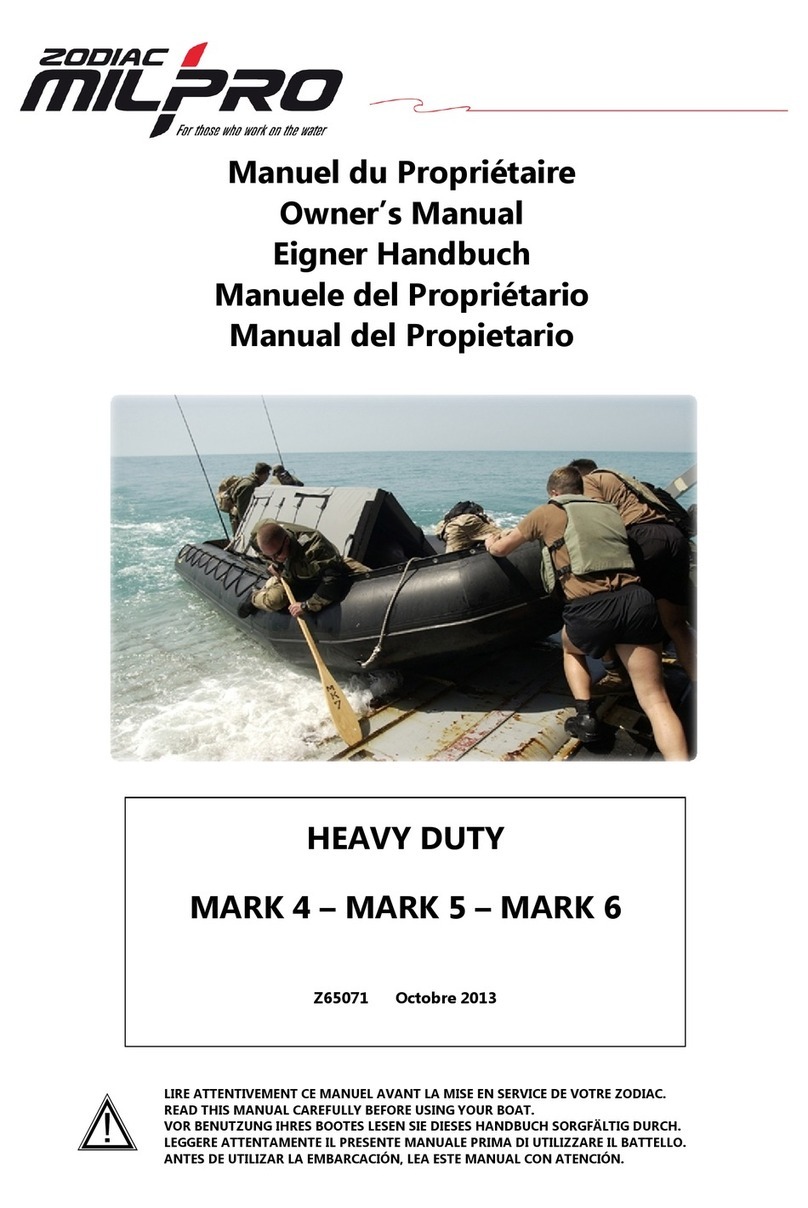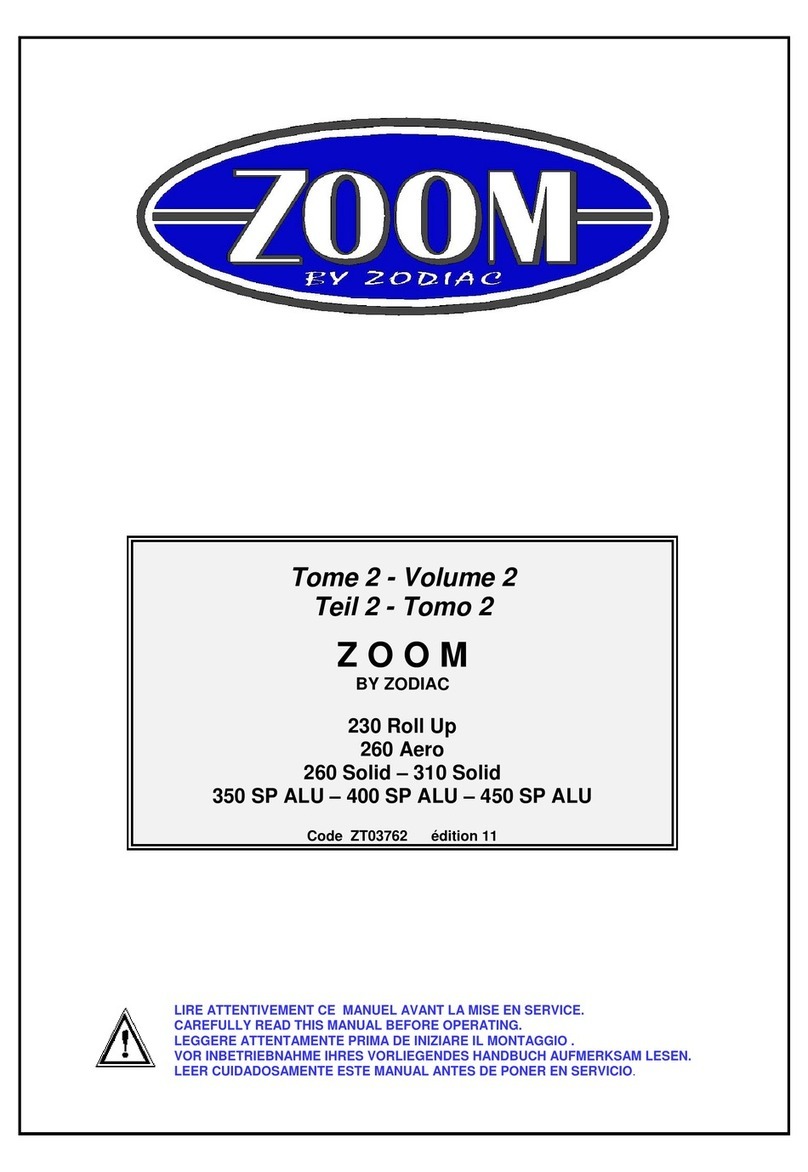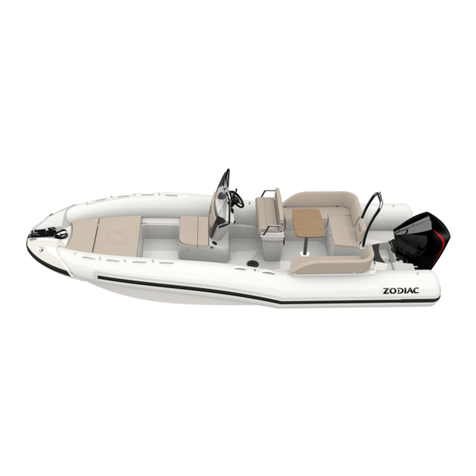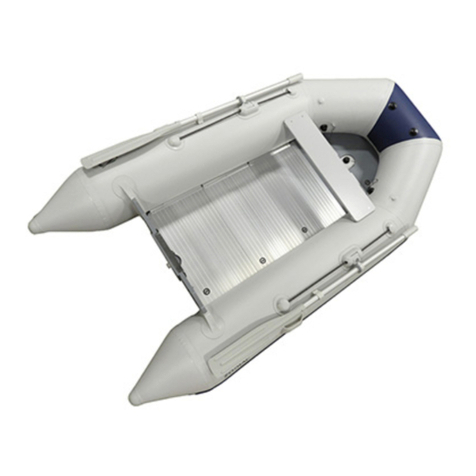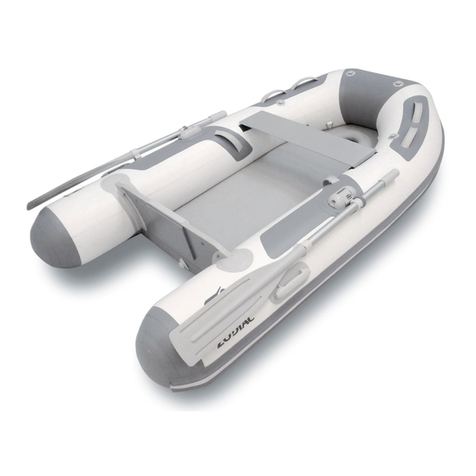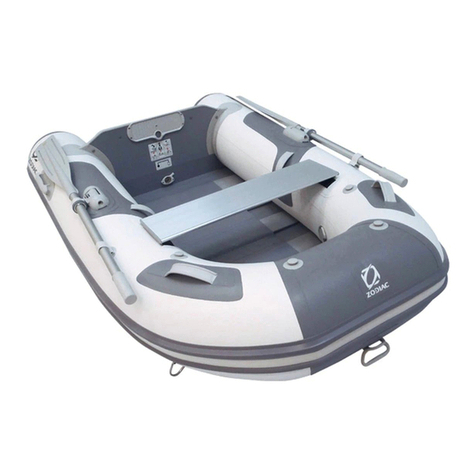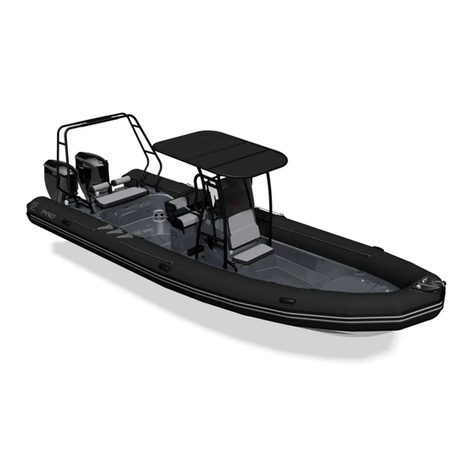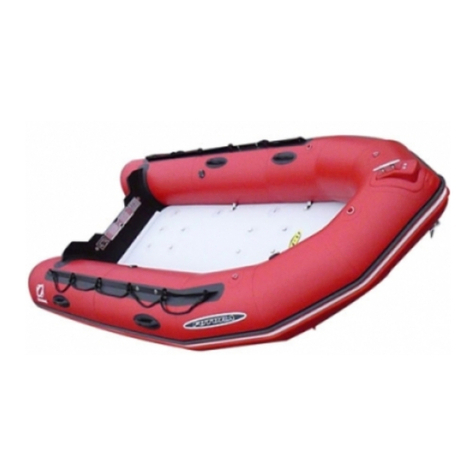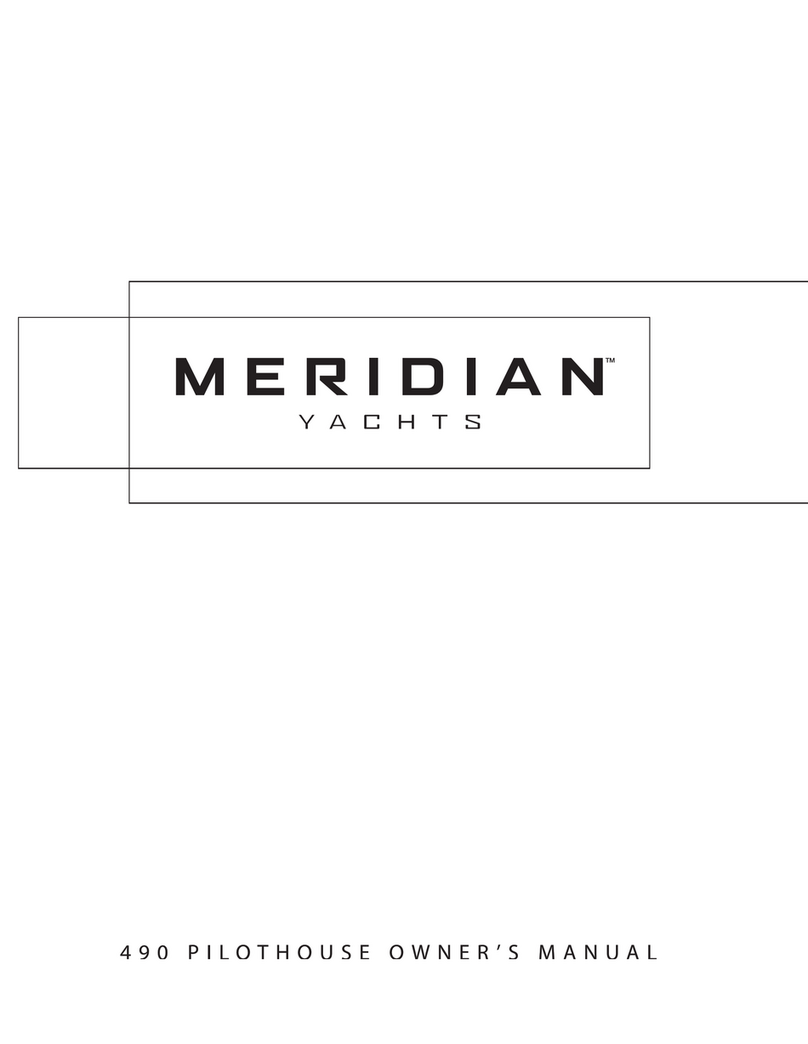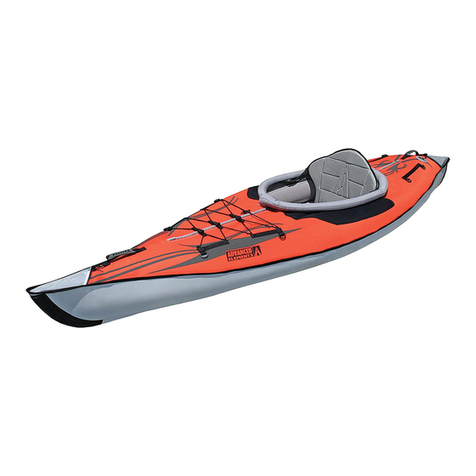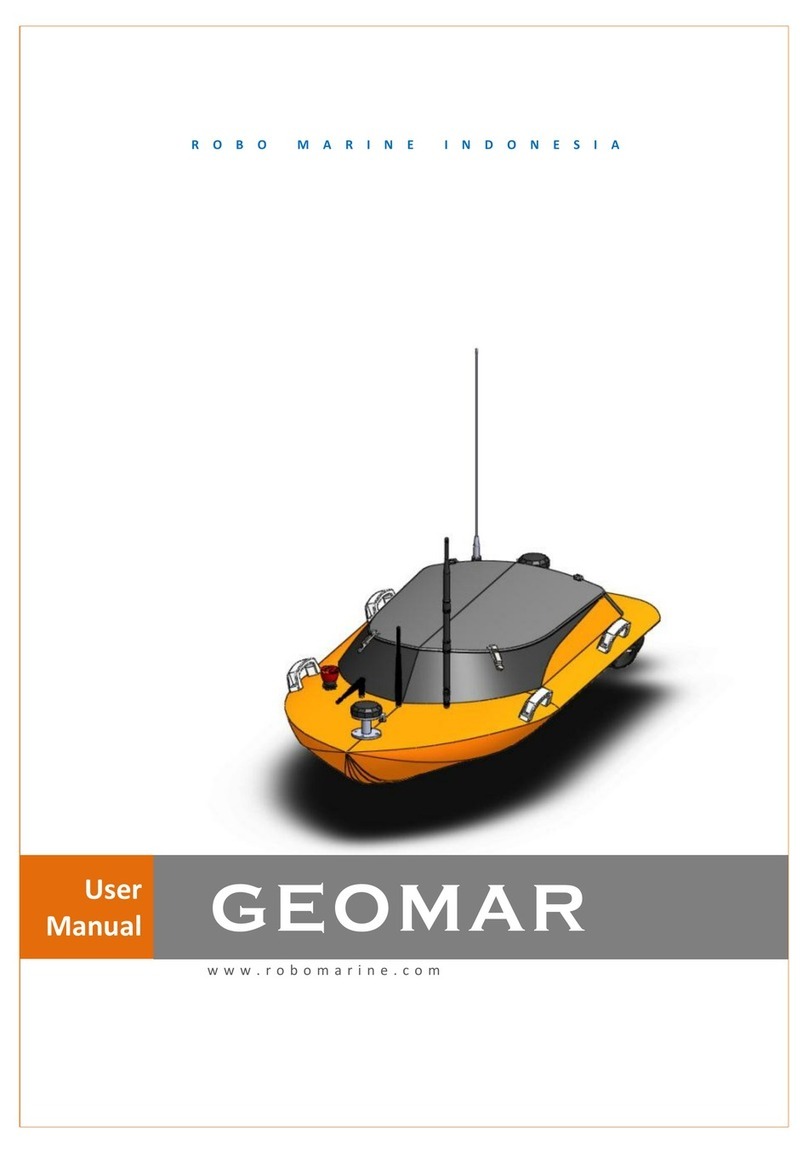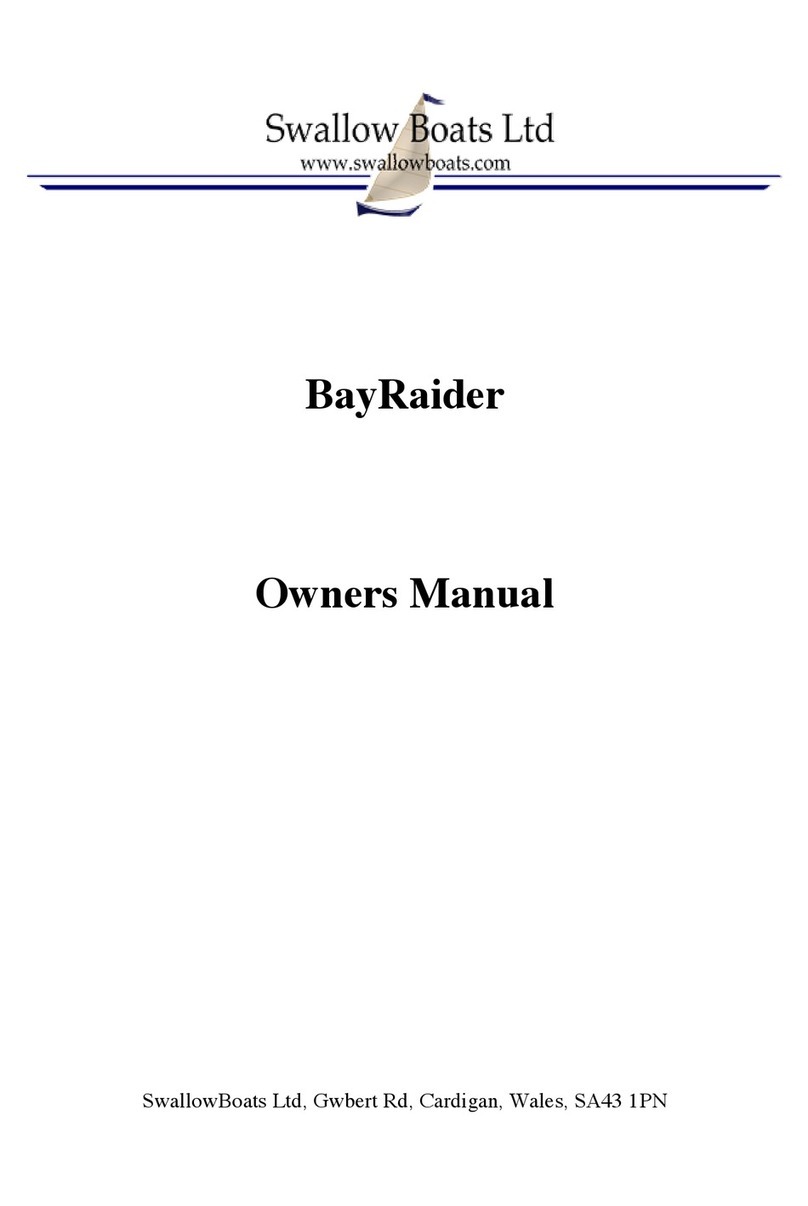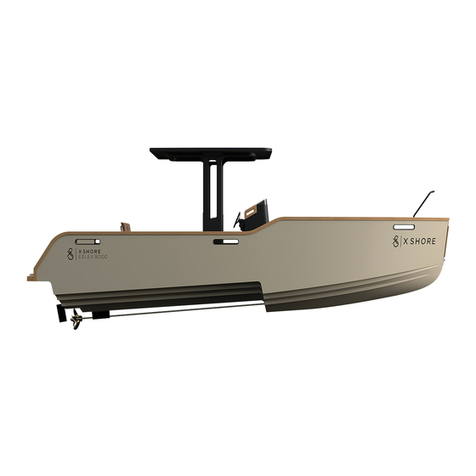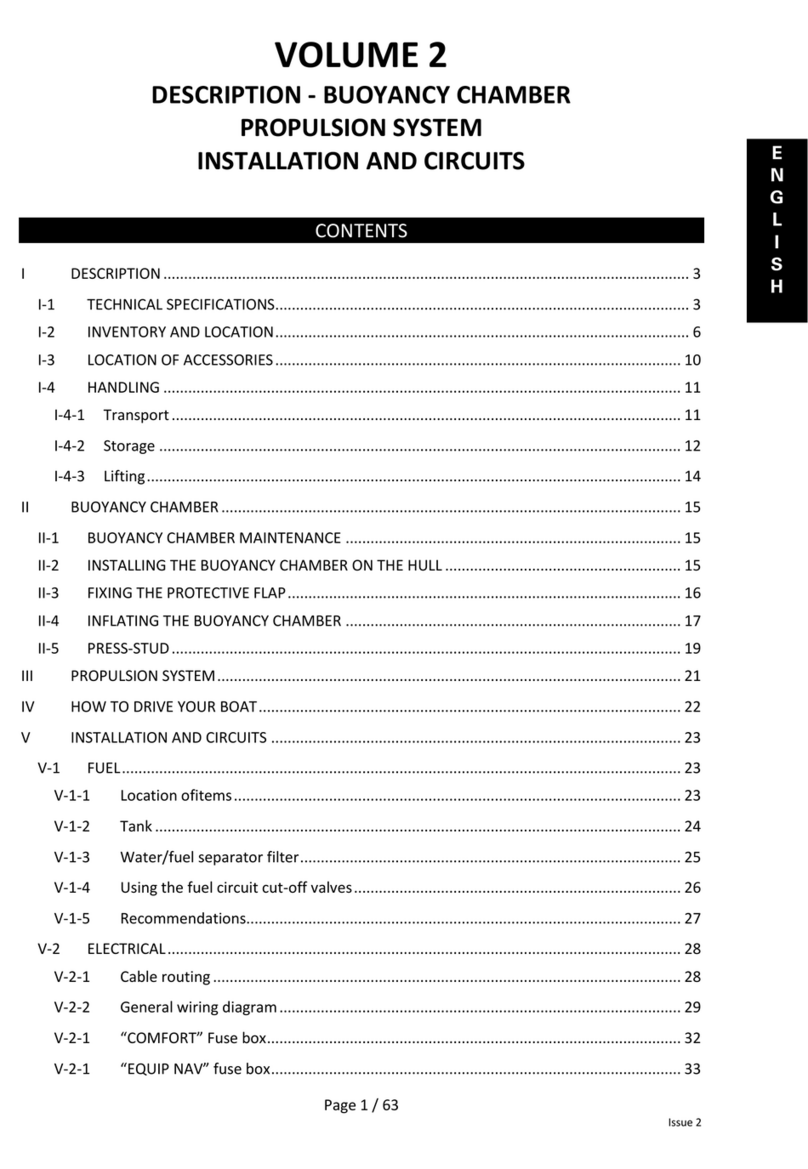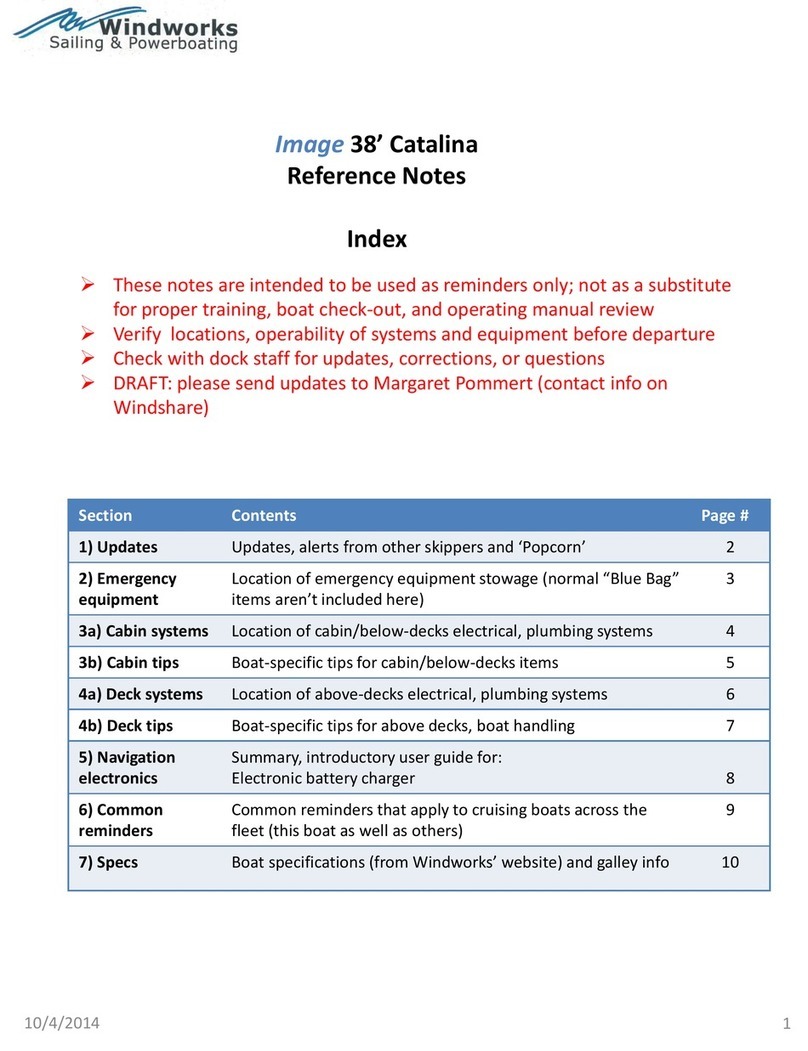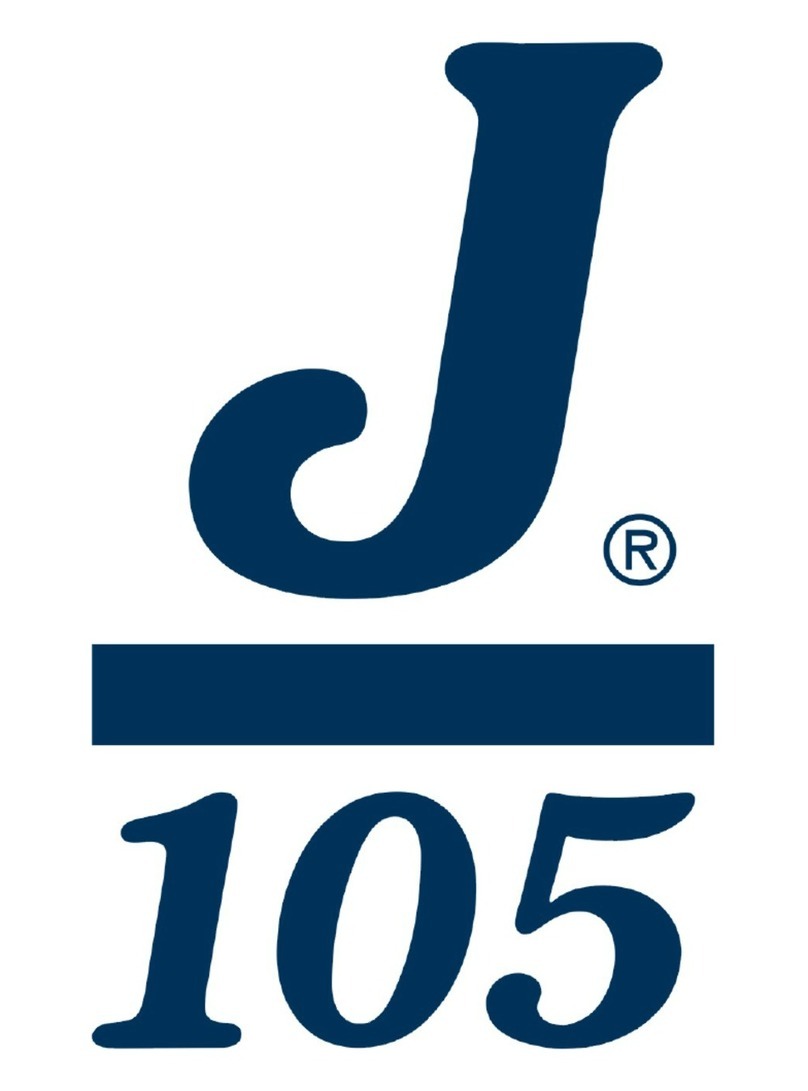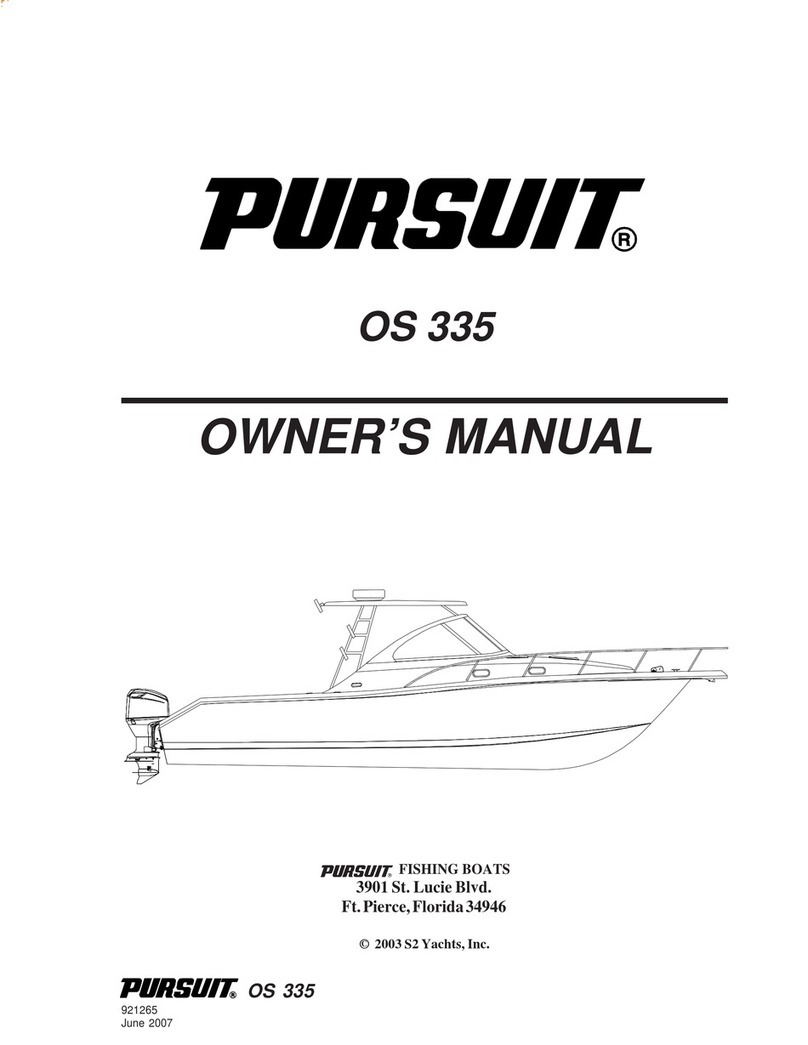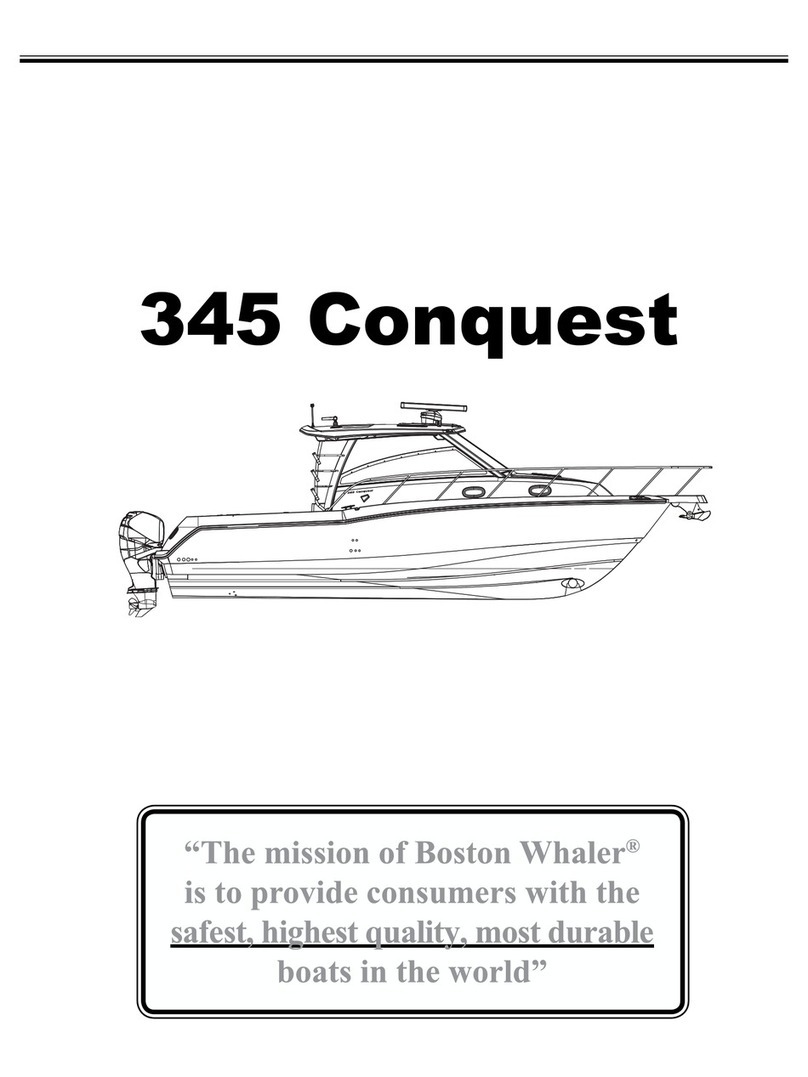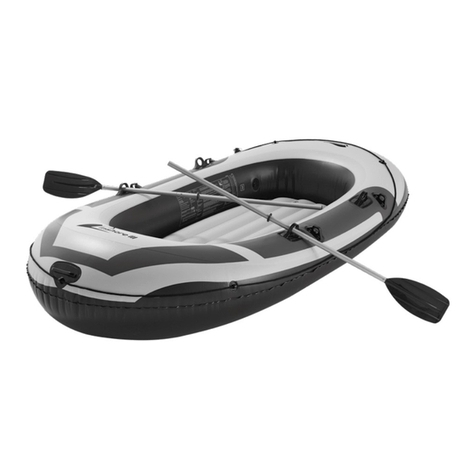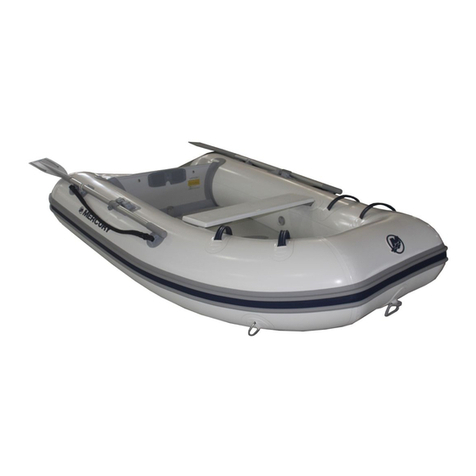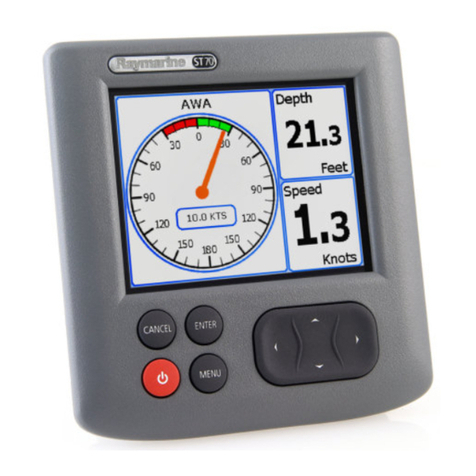
5/18
BOAT ASSEMBLY
ASSEMBLE THE BOAT ON A SMOOTH CLEAN SURFACE
ROLL UP FLOOR ASSEMBLY
Illustrations in APPENDIX page A-8
The slatted floorboard decking, arranged in a folding mat (Fig. 1), is uniquely designed to enhance the
rapid deployment concept, is completely removable and comes factory installed so that it rolls up
normally with the fold of the boat. It is constructed as a single, mat-type roll-up flooring system
consisting of slats made from anodized aluminum that are factory covered with wear-proof fabric.
Quick release buckle operated sheathes are installed on the aft area of this floorboard section to
secure 1 or 2 CO2 or SCUBA bottles, should the boat be deployed with such a system.
It is secured in the bow to the thrust board (Fig. 2) and between the transom and the transom retaining
batten in the aft (Fig. 3).
It is adjusted on the transom (Fig. 4) by two tension straps from floor to transom. Tighten straps 1” or
2.5cm past snug, and on the sides by placing the floor under the rubber triangular extrusion glued to
the bottom of the buoyancy tube on either sides of the transom inside the boat. (Fig. 3).
OPTIONAL ALUMINIUM FLOORBOARDS (FC 470, AS AN EXAMPLE)
Illustrations in APPENDIX page A-9
An aluminum floorboard hard deck system with its stringers does not allow the use of automatic
inflation. Nevertheless one can use an inflation bottle and feed an inflation hose to any of the I/C
valves, once the hard floorboard decking and stringers are installed.
When the slatted floorboard decking is not preferred for use, it is easily removed and as easily
replaced with the optional aluminum floorboards.
It is used when the boat requires a higher rate of speed, mobility and maneuverability, better
directional control through high sea conditions, as well as achieving better fuel economy. The optional
aluminum floorboards are made of lightweight anodized marine aluminum, are self-locking and come
in four panels and bow board(s) with two securing aluminum stringers. With practical training, the time
required to install the rigid flooring system can be reduced to only a few minutes.
It is mandatory to use this type of floor when using more than 40 HP engine (on FC 470) or a twin
engine combination of not more than 2 x 30 hp. All engines should be bolted through the transom.
The stringers (7, Fig. 3) are essential to the seaworthiness of the boat. They lock in the floorboards
and assure the rigidity of the entire structure.
NOTE: For other boats, see their HIN plate for specific HP ratings or page Appendix 2 in this document.
ASSEMBLY OF THE OPTIONAL FLOORBOARDS
Illustrations in APPENDIX page A-9
Use soap & water at the corner reinforcements (c) (between the buoyancy tube and the bottom),
to slide & make it easier to position the floorboard elements (Fig. 1-B).
ATTENTION: NEVER USE TALCUM POWDER
as they contain Silicones, which are harmful to the
boat.
Inspect each element to understand how it will be assembled:
The order of assembly of each element is indicated on a label in the upper right-hand-corner of
each floorboard,
The bow floorboard section has an upside and a down side position. The upside is identifiable by
a label of the sun (8) (Fig. 3). If the label is lost, use the lines on the aluminum junction profiles to
guide you, they are apparent when assembling.
Lightly inflate the buoyancy tube (this helps the elements to take their place).
Slide the bow floorboards (1and 2) (Fig. 4) into the corner reinforcement (c) (Fig. 1-B).
Place the aft element (5) against the transom (6). (fig.2).


